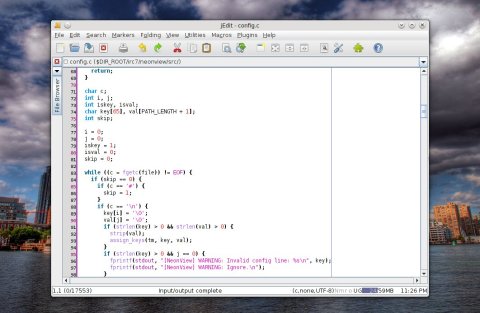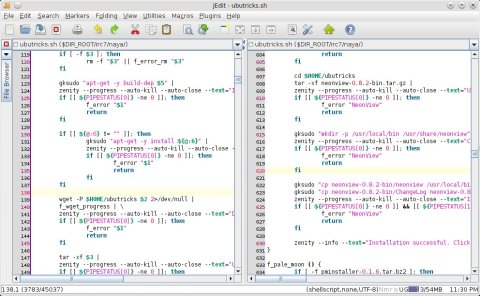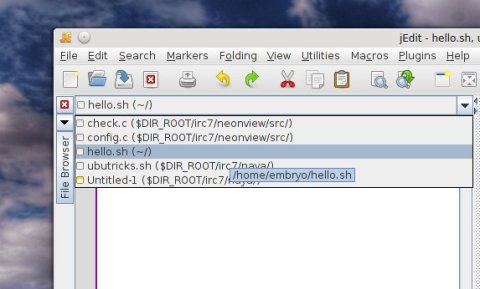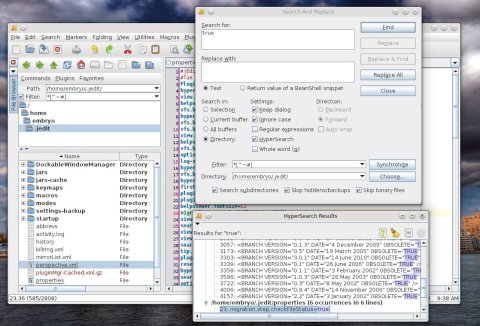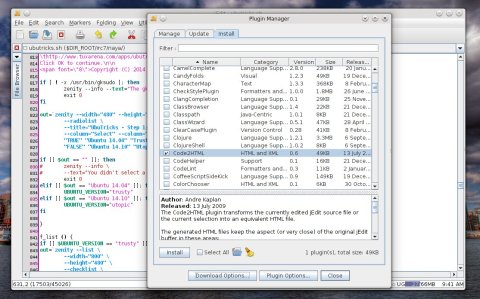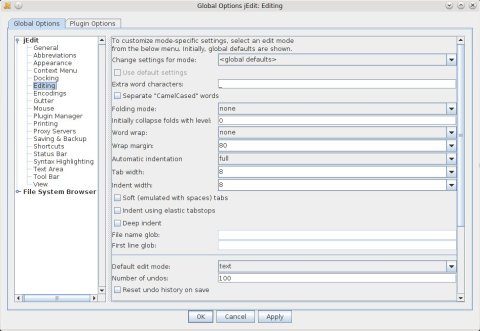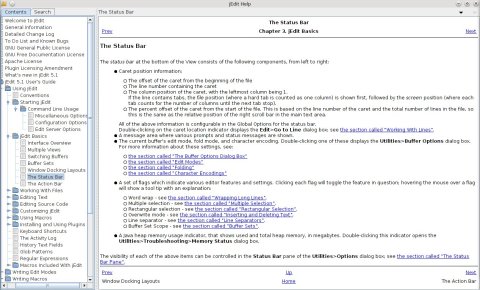jEdit is a feature-complete editor with countless programming features, including syntax highlighting, indentation, edit modes for tens of languages. jEdit is written in Java so you will need to have OpenJDK installed.
jEdit supports split view modes both horizontally and vertically, and the keyboard shortcuts for quickly switching between them are Alt+Pg_Up and Alt+Pg_Down. For the same file, changes to one view are instantly reflected in the second view.
Vertical split view mode:
Instead of a tabs, jEdit uses a drop-down list from which you can select the current file to edit:
The status bar will show information such as cursor position (line number and column number), the currently selected edit mode, fold mode and encoding. There are also a few toggle buttons to quickly enable or disable word wrap, insert mode, rectangular selection mode.
You can set markers, which will help you mark a line in a large file and then return to it quickly either from the menu or by using keyboard shortcuts.
The left panel provides a tree-like file browser with a powerful search and replace function, which allows to search text inside files in a folder and sub-folders and use regular expressions. Results will be listed in a separate window, and once you click a result the file will be automatically opened in jEdit.
jEdit allows you to install directly from it tens of online plugins, which include tools for various programming languages.
Regarding keyboard shortcuts, an interesting approach is that for some of its tools and functions, jEdit uses Emacs-like shorcuts (for example to go to the next marker you would press Ctrl+E Ctrl+. (you can keep Ctrl pressed and then press E followed by the period character).
System tray integration is also enabled by default. jEdit remembers last opened files between sessions and will restore them, including the scroll position.
jEdit provides an extensive configuration dialog, where you can change virtually every aspect of jEdit, from appearance and toolbar icons, to editing behavior and functionality features.
The documentation is also abundant, and jEdit comes with a very comprehensive offline manual on how to use it, available via the Help menu.




